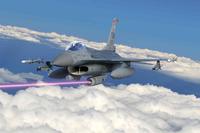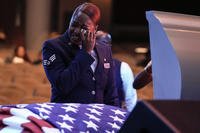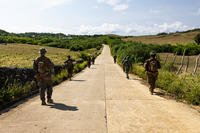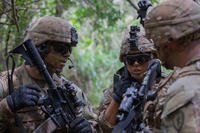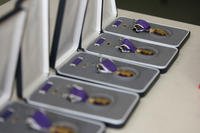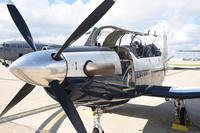HONOLULU -- Navy Adm. Sam Paparo on Friday took over for Adm. John Aquilino as commander of all U.S. forces in the Indo-Pacific Command region at a ceremony at a pier looking out at the battleship USS Missouri and the USS Arizona Memorial in Pearl Harbor, Hawaii.
The change of command not only represents a turnover of leadership in a combatant command that spans about half the Earth's surface but also one that has gained significance as China's efforts to exert control over an increasing area of the Pacific have intensified.
Underscoring the significance of the position, the change of command was not only attended by top military officials like Defense Secretary Lloyd Austin and Navy Secretary Carlos Del Toro but also defense ministers from Australia and the Philippines and the heads of state from the Federated States of Micronesia and the Republic of Palau.
Austin, in his remarks at the ceremony, said that the "command's mission is at the heart of American security in the 21st century" and that Paparo is "exactly the right leader for this moment and this mission."
Officials, including Austin, stressed the importance of maintaining strong relationships with allies as a key task of the command.
Under Aquilino's tenure, America has made significant efforts to expand not only its cooperation with countries such as the Philippines and Papua New Guinea but also launched a historic partnership with Australia to provide the country with U.S. nuclear-powered submarines.
Meanwhile, Paparo is taking on the role after three years of leading the Navy's Pacific Fleet -- the command that oversees Navy forces in the Indo-Pacific. He is also doing it at a time when military officials have said the tempo and presence of U.S. forces in the region need to increase to counter the growing Chinese threat.
Just on Tuesday, the Philippine coast guard said that the Chinese coast guard rammed and shot with water cannons two of its vessels as the latest in a growing number of skirmishes over islands and reefs in the South China Sea.
"The People's Republic of China is the only state with both the intent to reshape the international order ... and the power to do so," Paparo said at a Navy conference in San Diego in February.
China "makes expansive and unlawful claims to waters and to features," Paparo said, before adding that "a look at its maps and a passing familiarity with the United Nations Convention on the Law of the Sea exposes the absurdity of its claims and its pretzel logic."
Leaders of allied nations in the region have also voiced their support for Paparo's leadership.
Speaking at a press conference Thursday, Australia's deputy prime minister and minister of defense, Richard Marles, said that he's "had the opportunity to get to know Adm. Paparo over the last few years and I know that this command could not be in a safer or better pair of hands."
Aquilino assured the gathered crowd that he is leaving Paparo “the most integrated, lethal joint force on this planet and they are ready.”
Related: Marine General Issues 'Call to Action' Against China Hackers Lurking in US Computer Systems


